You’ve found the perfect partner; now you just need to find an engagement ring that will be perfect for (hopefully!) the rest of their lives. Here is an insider’s guide with ten top tips you need on finding the ring.
1. Give them what you think they’ll love
It seems like an obvious piece of advice but try to choose a ring that is to your partner’s taste. It may not necessarily be to your taste or be an identi-copy of your mum/granny’s engagement ring.
2. Surprise them!
The trend these days is for couples to shop for rings together, but if you're more of a traditionalist and love to surprise your other half, this is a very thoughtful and romantic way to go. Be sure to consult with some trust-worthy friends or siblings to get an accurate picture of their likes and dislikes.
Alternatively, it is a truly lovely experience to ring-shop together and celebrate afterwards somewhere special with a glass of champagne.
3. Style selections
Take a cue from their overall vibe and the style of jewellery they already own. Do they prefer traditional or modern? Are they more of a platinum/white gold girl than a yellow-gold one? How do they react to other people's engagement rings? Do they ever express an interest in a particular style when flicking through fashion magazines? Are they a ‘girl-next-door-type’ like Kate Middleton or a vampy vixen like Eva Green? Does she gravitate towards decorative, vintage jewels as opposed to simple, classic pieces? Would they love a coloured gemstone or a diamond ring?
Classic diamond solitaire rings are still the most popular engagement rings as they express timeless elegance that never dates. Would they like a clean and simple solitaire in a minimal four claw setting?
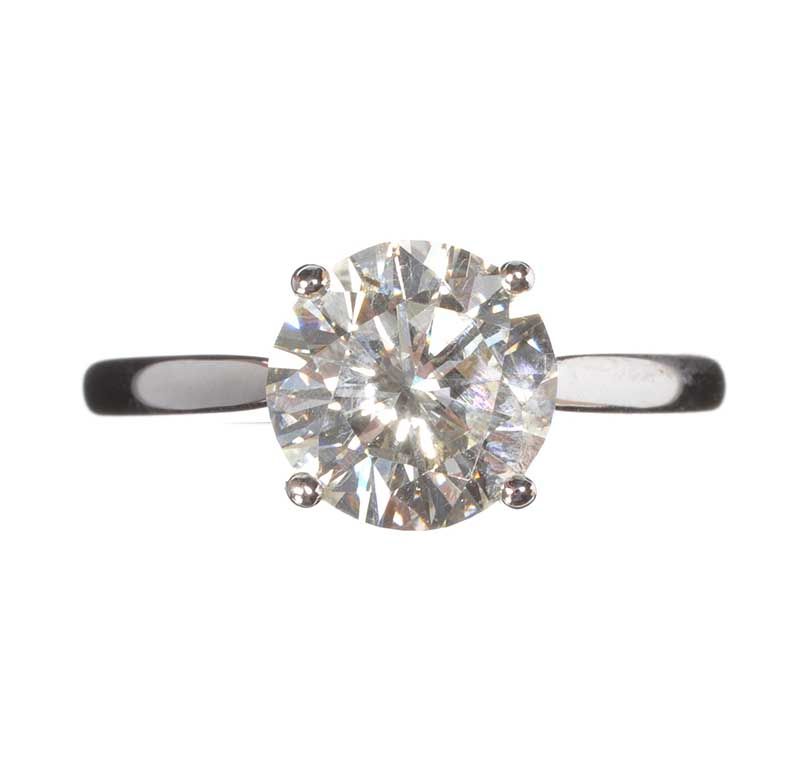
Figure 1 18CT WHITE GOLD AND DIAMOND SOLITAIRE RING
Or perhaps an antique vintage basket setting with romantic detailing?
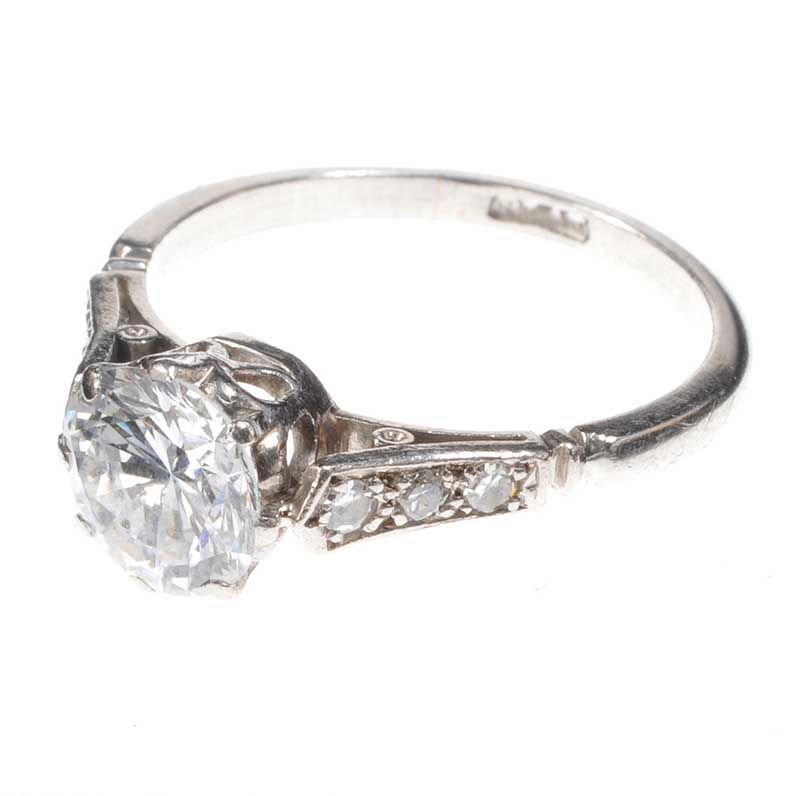

You could choose a Trilogy ring with three stones representing your love in past, present and future.
Or a vintage-style Cluster ring which features a cluster of numerous diamonds which can craft a striking and romantic look.
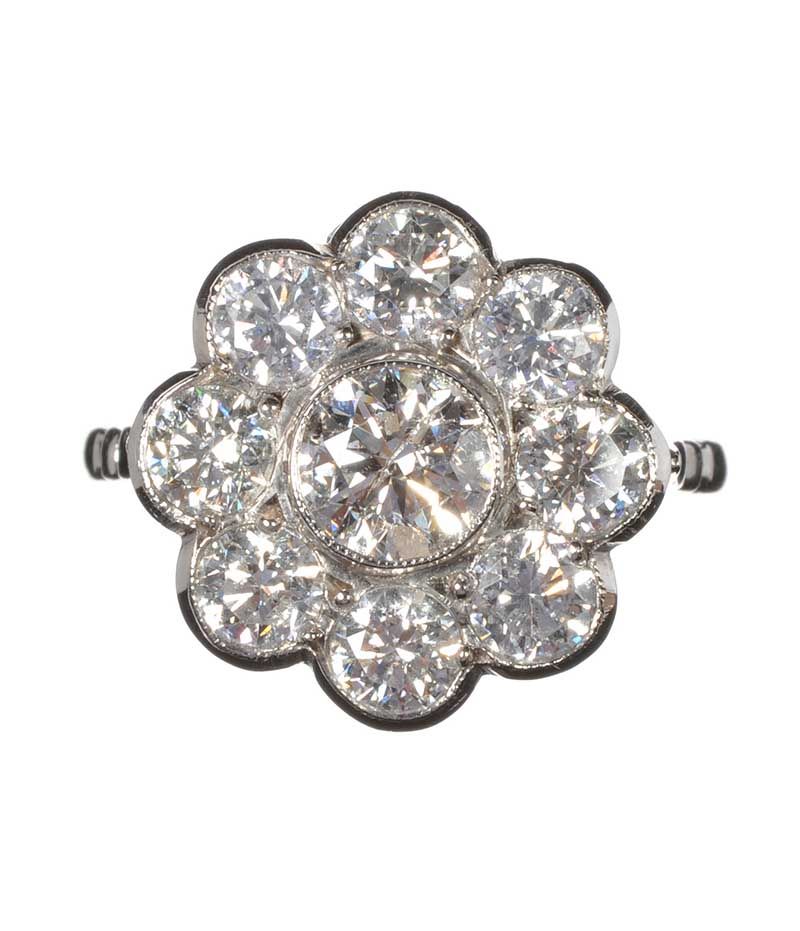
You could choose a Halo ring; a centre stone surrounded by a fine halo of smaller diamonds, creating an indulgent and contemporary look.
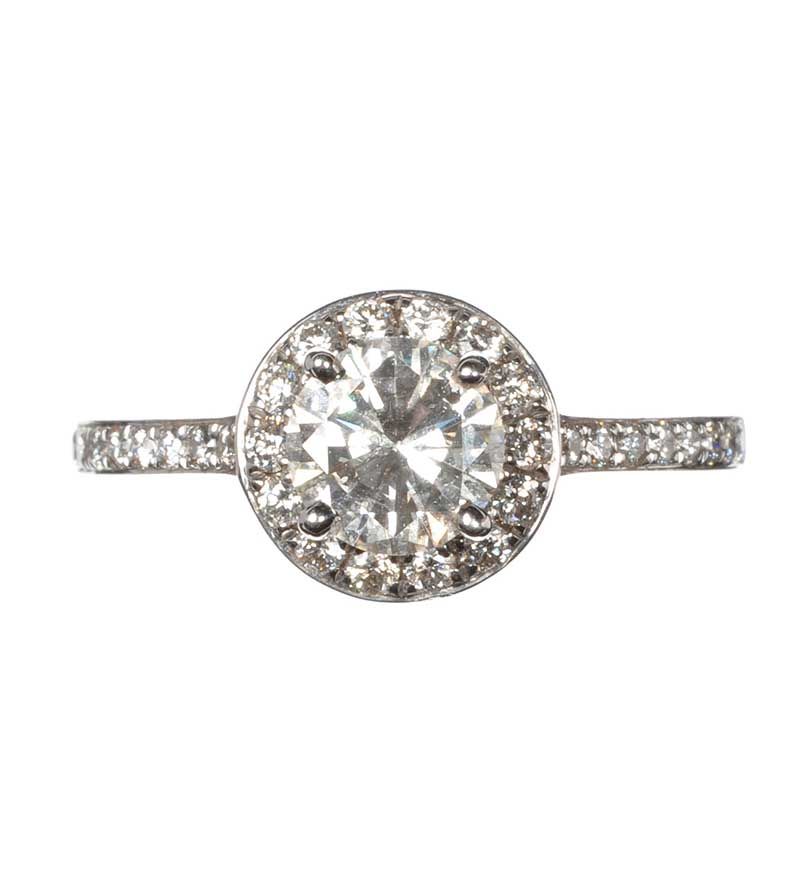

You could express your creativity with a bespoke designed ring for your loved one to your exact specifications or a ring by a famous design house.
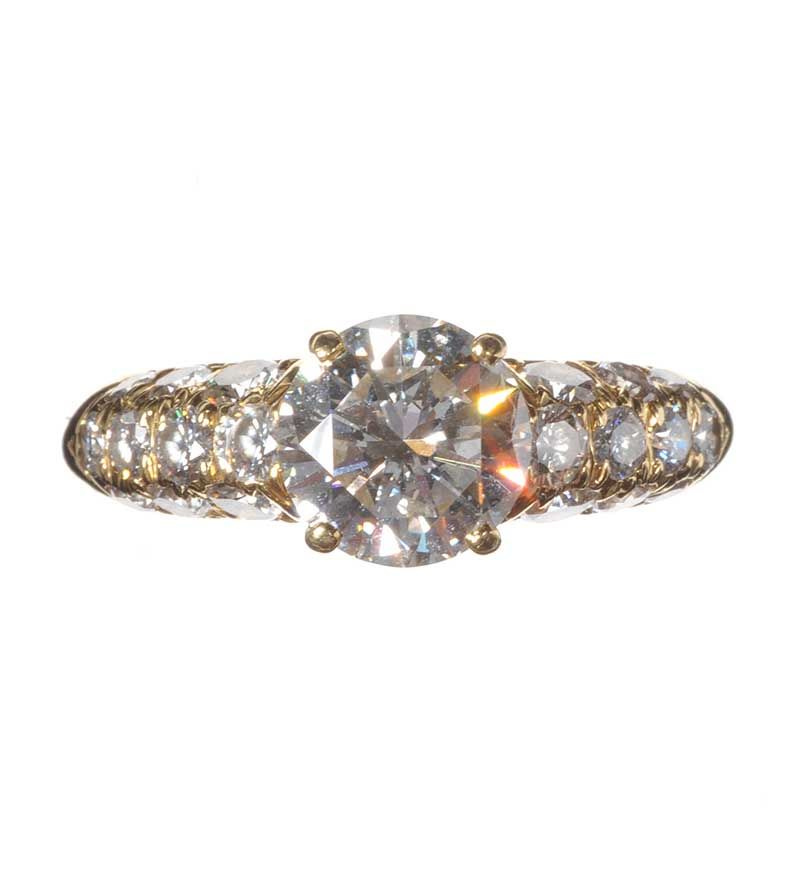

Figure 2 18CT GOLD AND DIAMOND RING BY THE DESIGNER DAVID MORRIS
Would you prefer to showcase a beautiful coloured gemstone in a vibrant hue? Ring such as this offer a pop of colour but are still classically elegant.
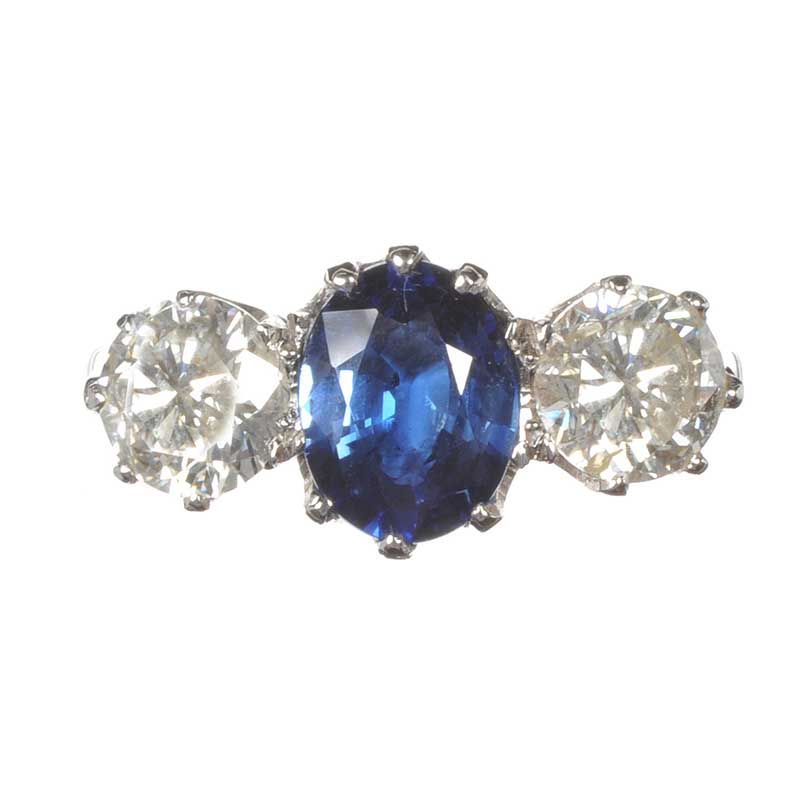

Getting the right combination of shape and setting is key!
4. Ring size reconnaissance
It is always helpful to know ring size especially if you are buying a ring as a surprise. Borrow one of your other half’s rings and have it professionally sized using an industry standard ring sizer. Some rings, especially those with diamond-set shoulders, will require that they fit perfectly.
5. Shape matters
Shape is important. Even before those 4 Cs (cut, colour, clarity, and carat), you must know what shape your future fiancée loves. The most common shape is the modern round brilliant-cut, but others include the emerald, asscher, pear, marquise, oval and heart-shape. These fancy cuts offer lots of interest and variety of sparkle. If she loves vintage jewellery, you could consider an old-cut diamond like an Old European cut. Although they have fewer facets than modern cuts, old cuts offer lots of charm and personality.
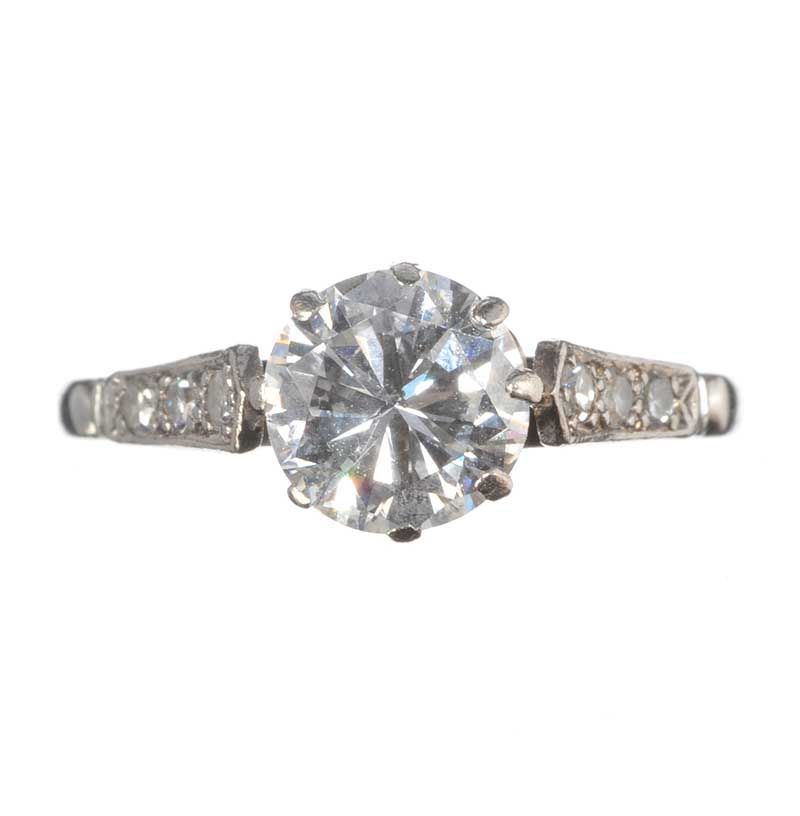
Figure 3 18CT WHITE GOLD AND DIAMOND ANTIQUE CUSHION CUT RING
6. D Flawless, dahling!
If you are buying a diamond engagement ring, you must familiarise yourself with the ‘Four Cs’ - cut, colour, clarity and carat. All must be considered equally when comparing diamonds.
Cut: Take some time to consider the quality of the cut. A diamond can be cut to varying standards affecting how the light reflects around the diamond, an effect known as its ‘fire’. If a diamond is cut too deep or too shallow, the diamond will be less brilliant.
Colour: The most valuable and rare colour is white, that is to say, colourless. Diamond colour grading begins at colour ‘D’, not ‘A’ as you might expect. The scale moves down to ‘Z’. Between colour ‘D to F’, diamonds are extremely white and prices are extremely high. Colour ‘G to J’ is still in the almost colourless range and offer buyers a decent colour at a much more manageable price point. Beyond colour ‘J’ diamonds begin to tint yellow or brownish. Diamonds with intense and unusual colours such as yellow, blue and pink are extremely rare and are called fancies.
Clarity: Most people are nervous when it comes to the clarity of a diamond. If you view any diamond with a jeweller’s loupe, you will see small inclusions. These inclusions can appear as small clouds or tiny black carbon spots but are usually invisible to the naked eye. Inclusions can affect how light bounces around the diamond, but they also make your diamond unique and shouldn't always be seen as a fault. As long as the stone is graded SI1 (Slightly Included 1) or above, you should be fine.
Diamonds can also be artificially treated, most commonly by being fracture-filled, irradiated or laser treated. All of this is legal, as long as it is disclosed to the buyer, but if you want a ‘natural’ and untreated diamond, guard yourself against terms such as ‘clarity enhanced’.
Carat: The weight, and thus the size, of a diamond is measured by carat. A carat is equal to 0.2gm. The average size of most engagement-ring diamonds is somewhere between half a carat and one carat. Buying just shy of the next carat (1.80ct instead of 2.00ct) can equal a savings of nearly 20 percent.
7. Good grades
It is ideal if diamonds one carat or larger are accompanied by a diamond-grading report issued by a recognised gemmological laboratory. GIA (the Gemmological Institute of America) is the most respected but there are a variety of other independent gemmological laboratories.
8. How much should I spend?
There are all sorts of myths about having to spend a certain multiple of your monthly salary on a ring, but you know your financial situation best and what you are comfortable with. That said, if you can comfortably afford it, you’re not spending enough! You want to wince just slightly when handing over your card.
9. Buy new from a jeweller or on the second-hand market?
There are alternatives to buying an engagement ring from a jeweller. You could, perhaps, consider buying a pre-owned or antique ring from an antique shop or auction house. Buyers get exceptionally good value for their money on the second-hand market, with jewellery costing one-third to a half of jewellery bought new in a high-street jewellers.
Alternatively, try the Hatton Garden wholesalers who normally only sell direct to retailers. In most cases they will not have any recognisable street presence, just a bell to ring, but will sell loose diamonds up to 50% cheaper than available on the high street. They won't have time for people who aren't serious and probably won't be interested in delivering much of a sales spiel, but if you know exactly what you are after, give them a try. Contact the jewellery trade associations for names and numbers to try.
10. Get it in writing
You will typically be supplied with a detailed receipt and insurance valuation as you would at a jewellers. Also, anything that affects its value -- if it was made by a famous designer, is an antique or period piece, or is handmade or custom-designed -- should also be noted.
.jpg)
